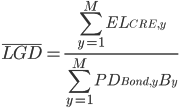How to Arbitrage Slotting Capital
Introduction
One of the options for allocating regulatory capital under Basel III and Solvency II is to use the "slotting" approach, whereby the capital for each asset is assigned according to a small number of slots, e.g., low, medium, and high risk. This creates specific behavior-incentives for the institutions under slotting and specific arbitrage opportunities for those institutions with more advanced approaches. This paper looks at the "game" set up by this set of incentives. The paper first summarizes the arbitrage opportunities and then explains the underlying rational. The opportunities are best explained on a graph.
Graph 1. Cost of Funds for Each Level of Measured Risk
In Graph 1 the x-axis is the riskiness as judged by the slotting criteria. The y-axis is the cost-of-funds. In Graph 1 the slotting cost-of-funds depends simply on the assigned capital per slot, multiplied by the required return on equity. For later discussion, the points on the steps are labeled as leading-edge and trailing-edge.
Graph 2. Range of Cost of Funds for Actual Risk
Graph 2 adds a range for the cost-of-funds. This range shows what the cost-of-funds (COF) would be if the risk was perfectly known. The true COF is different to the slotting COF for two reasons. Obviously the first reason is that the slots produce steps. The second reason is that the simplified risk assessments such as the typical slotting criteria do not capture all the possible risk variations within a deal: in a previous paper we demonstrated how the tenant, property and financial structures can produce great differences in risk for commercial property deals that seem to have identical risk according to conventional measures such as Loan to Value (LTV) and Debt Service Coverage Ratio (DSCR).
Graph 3. Areas [...]









